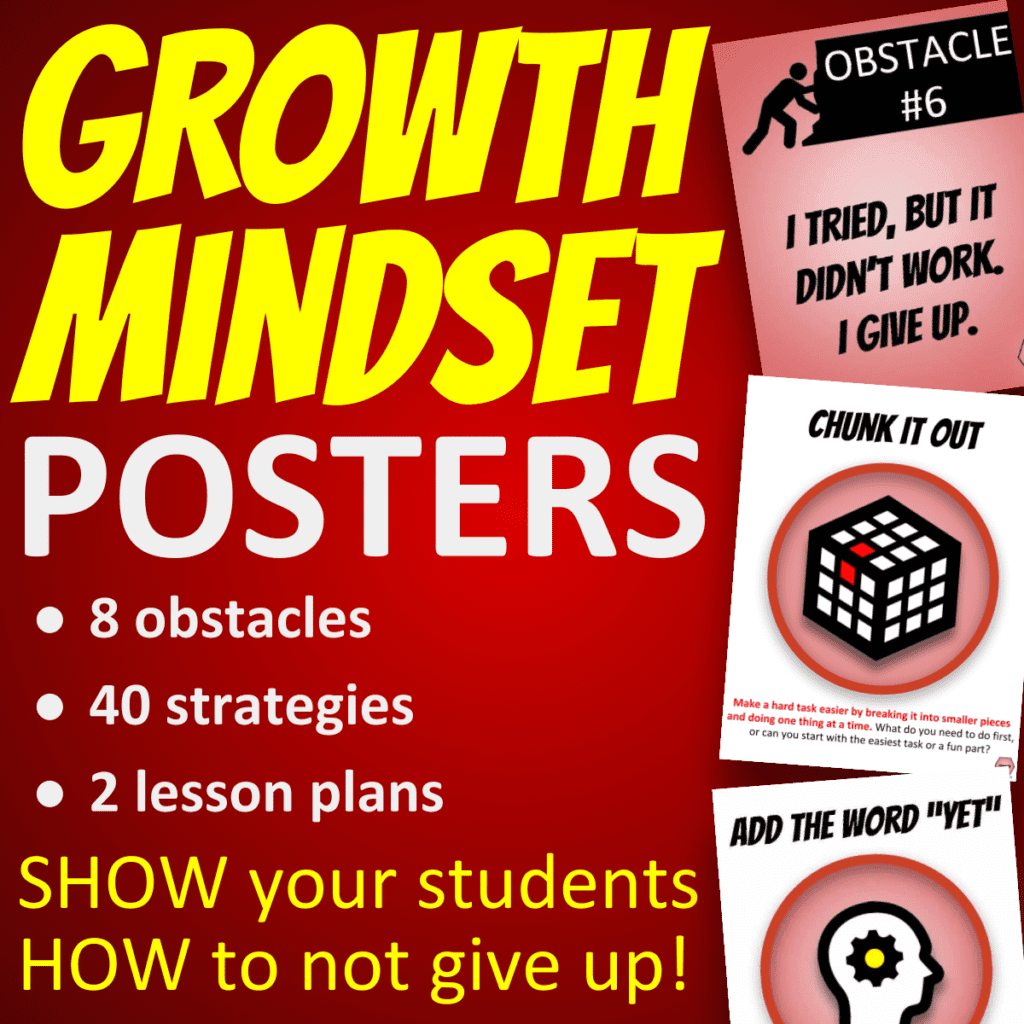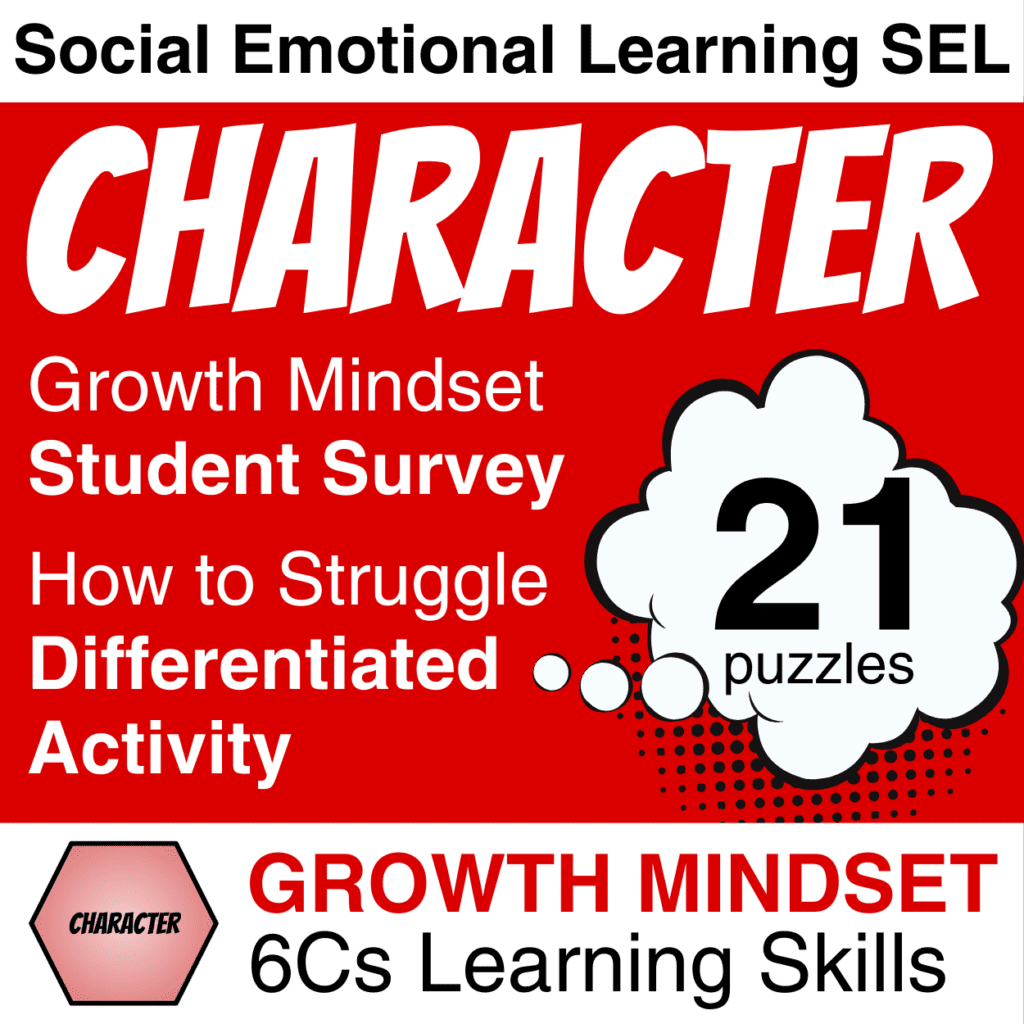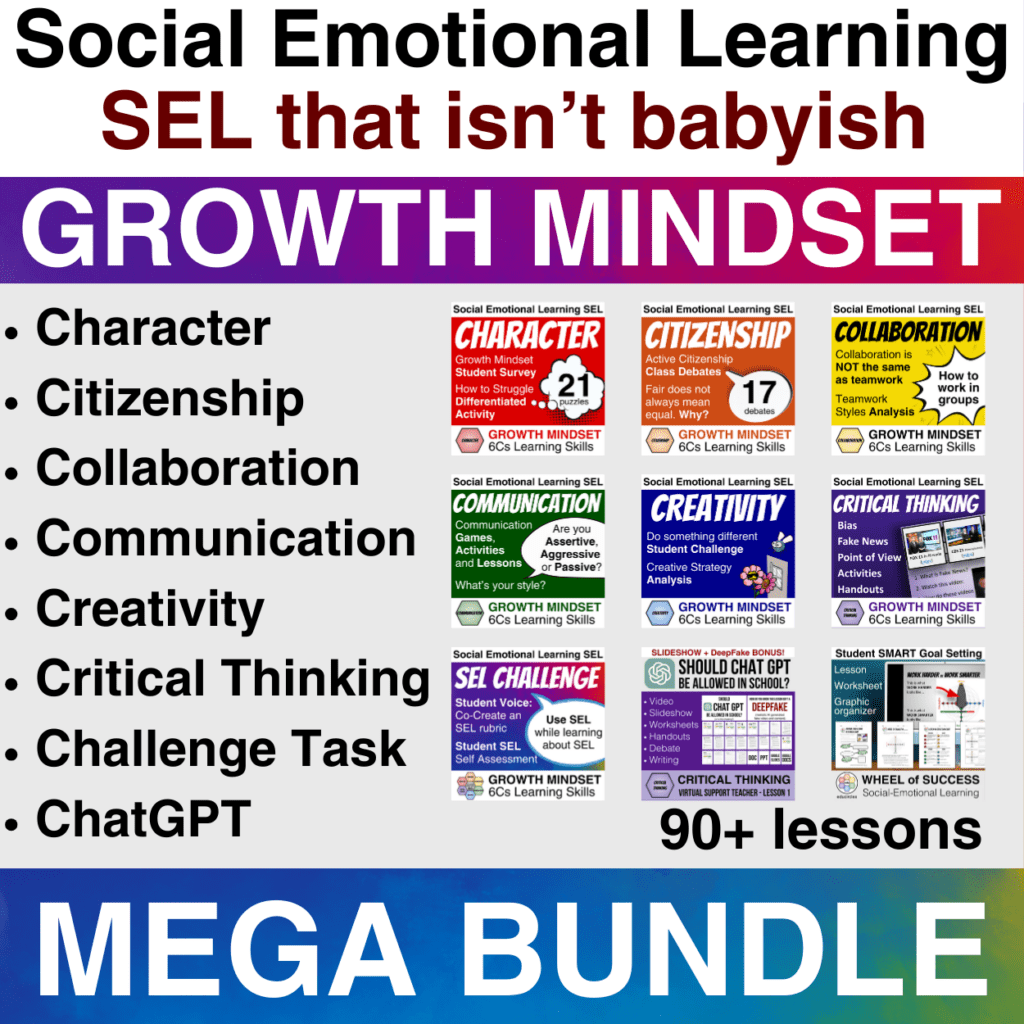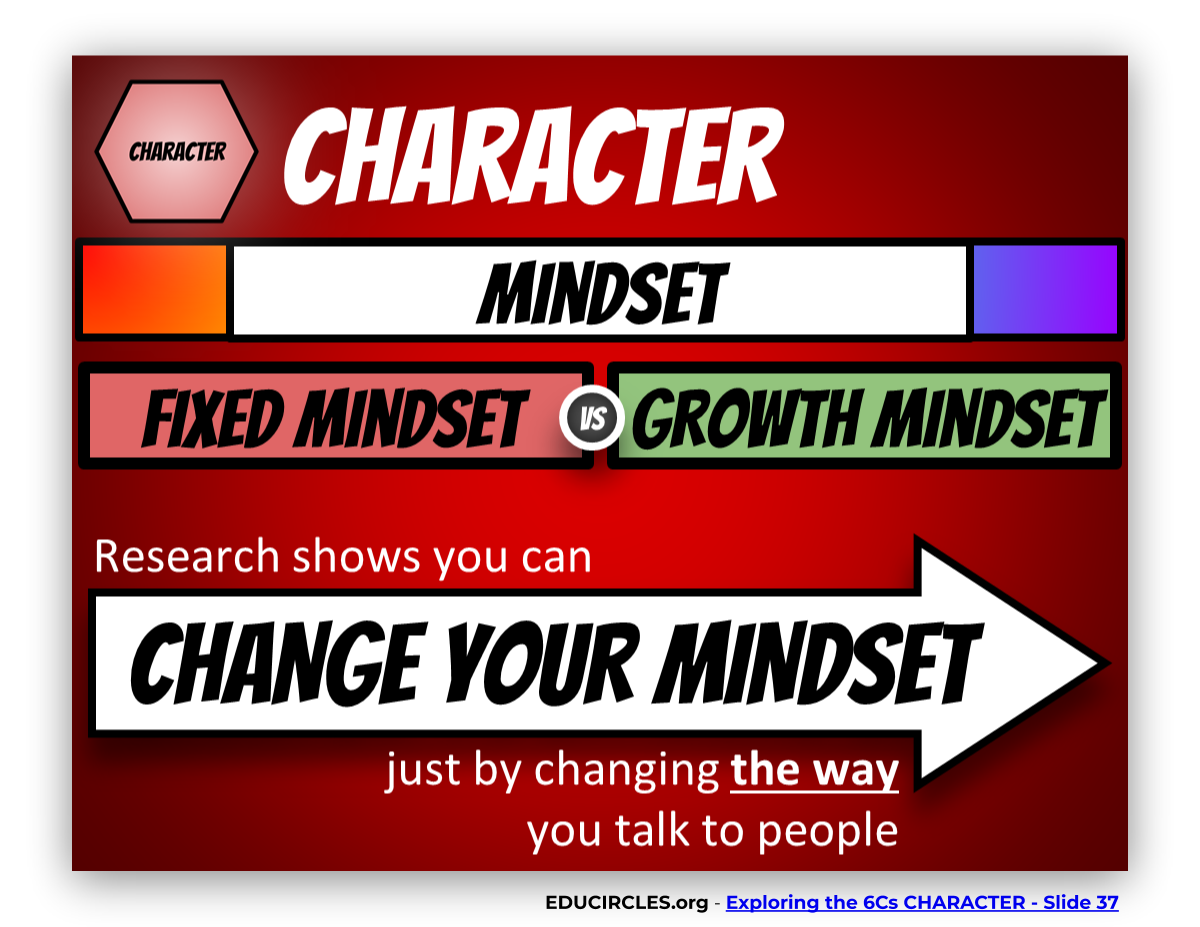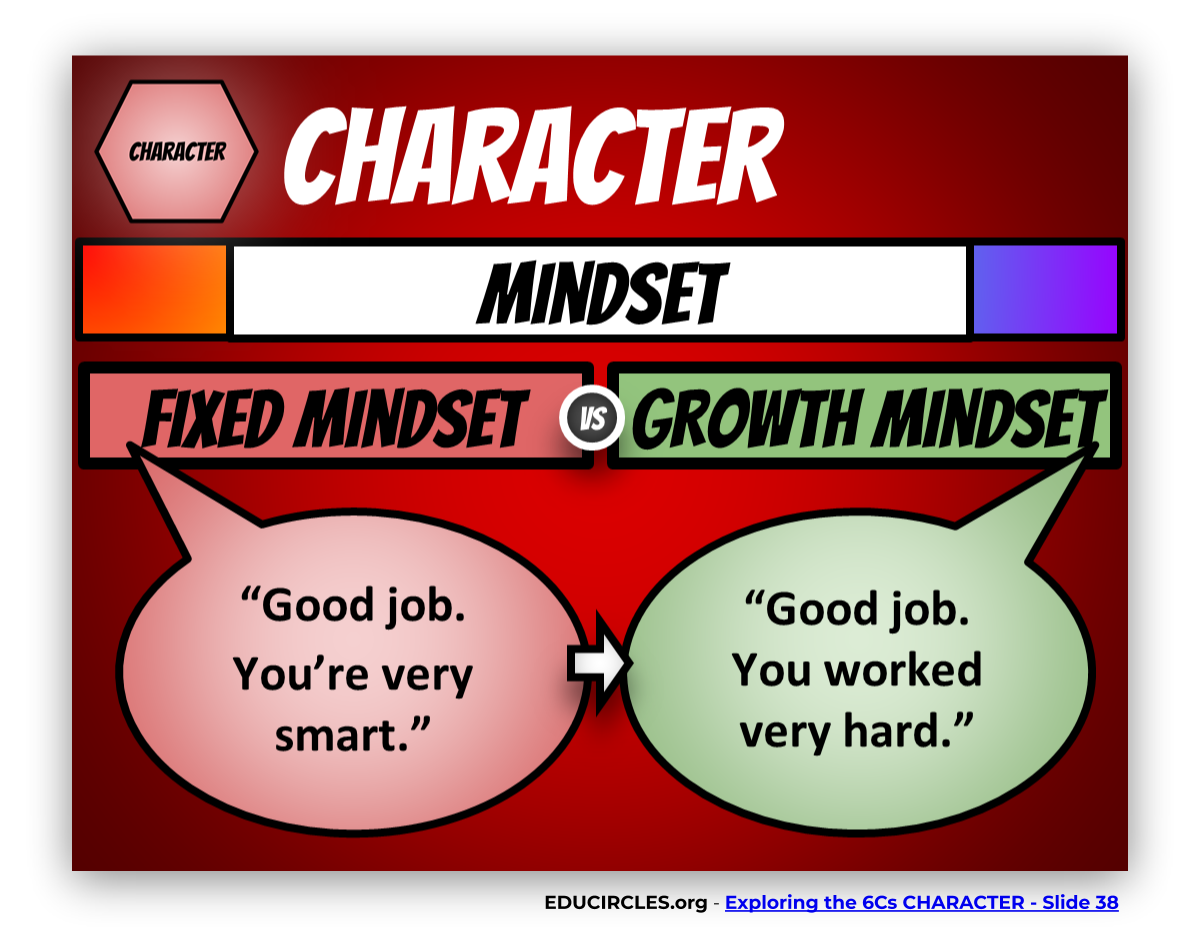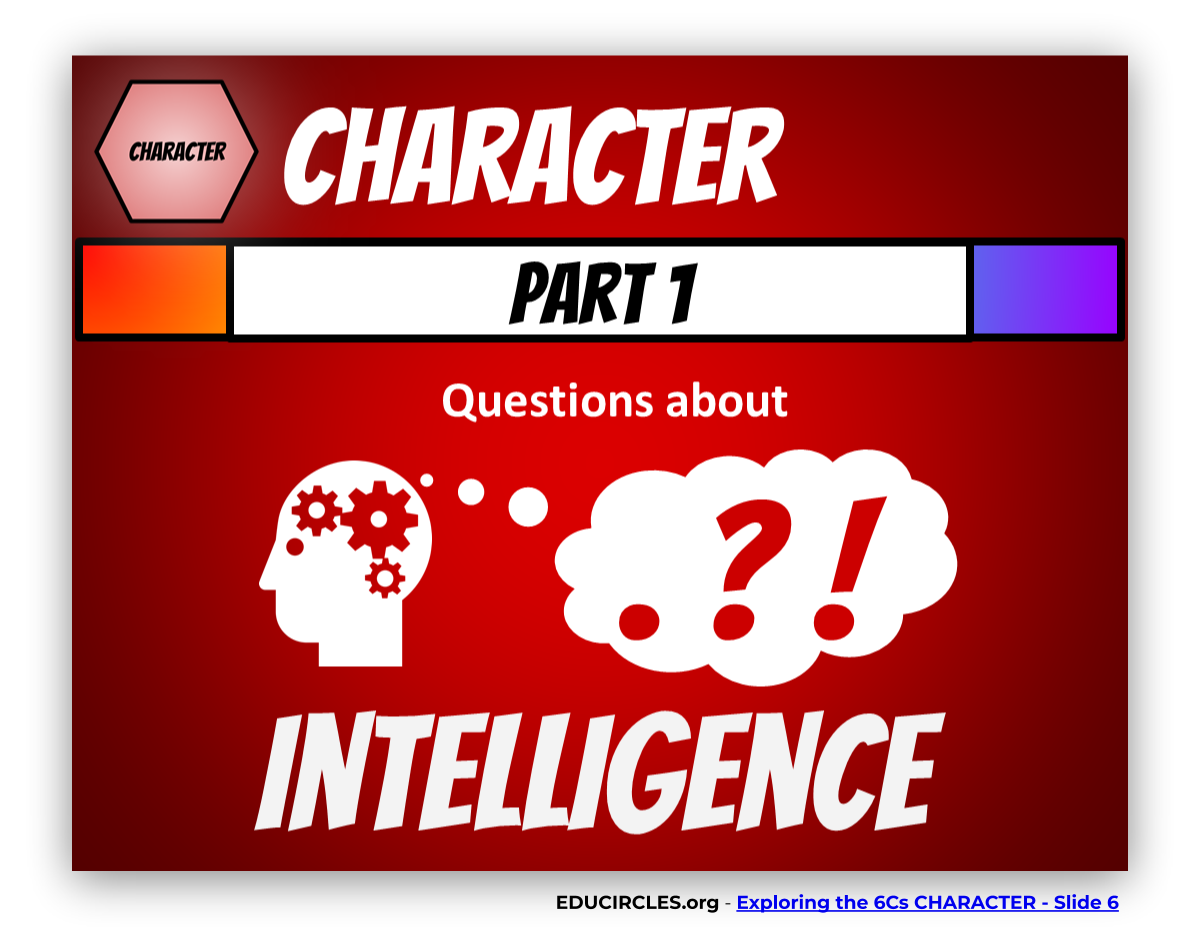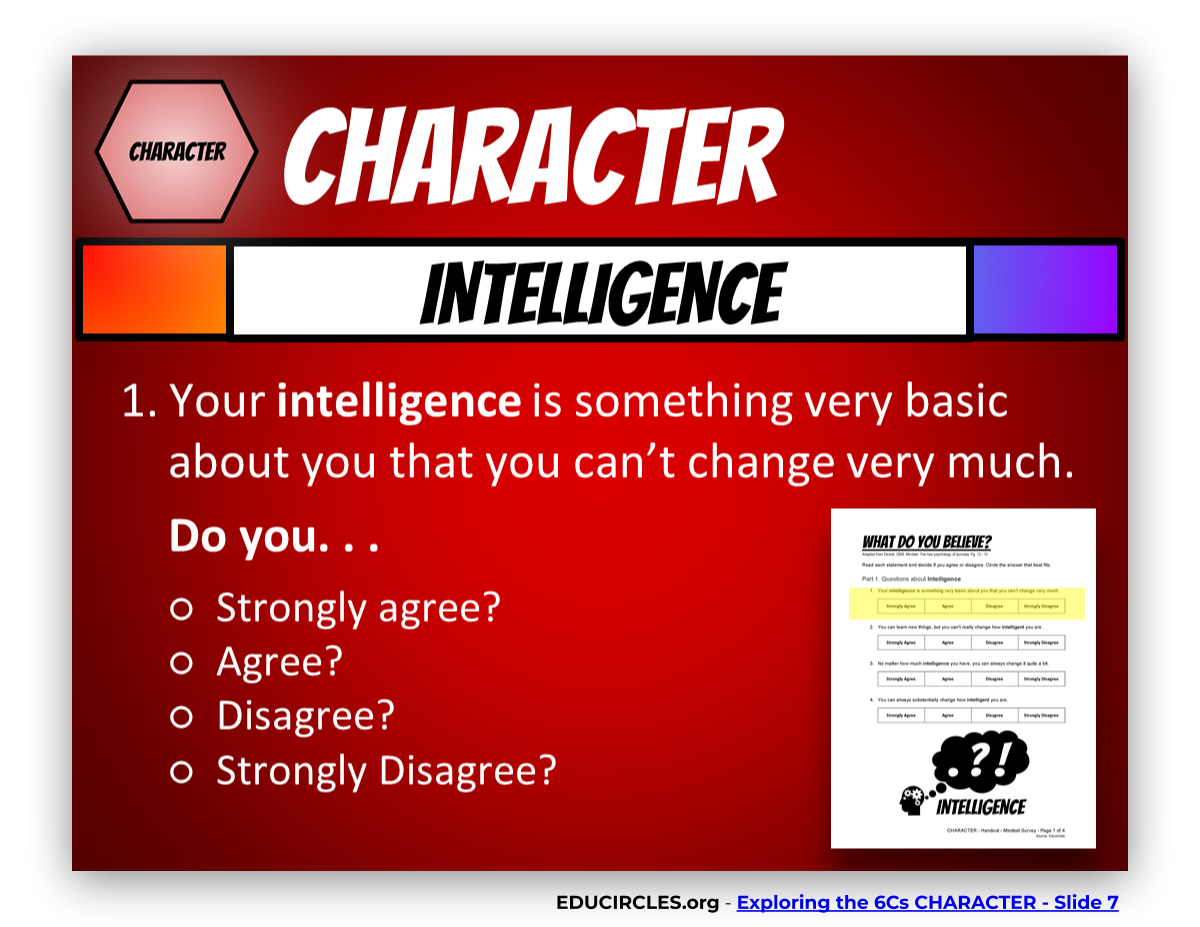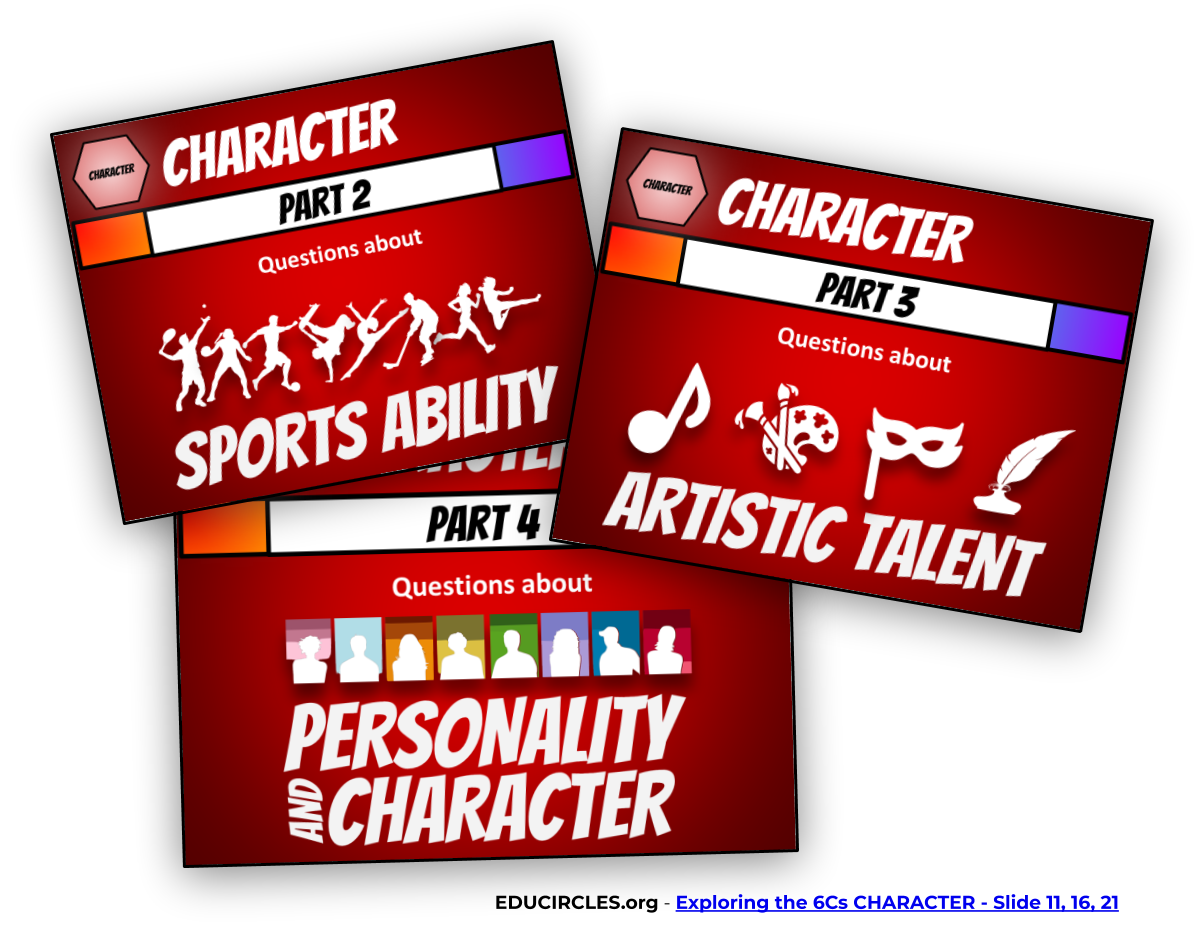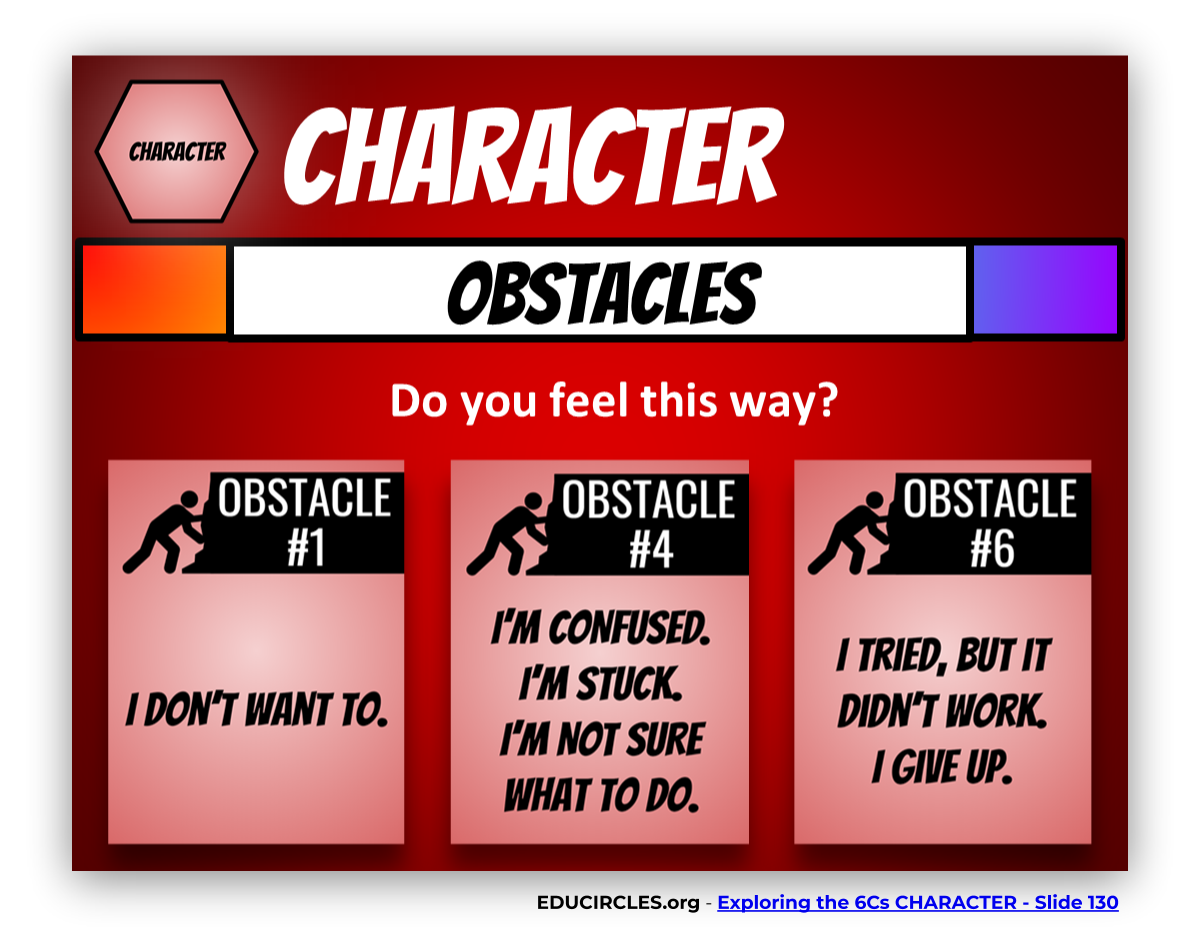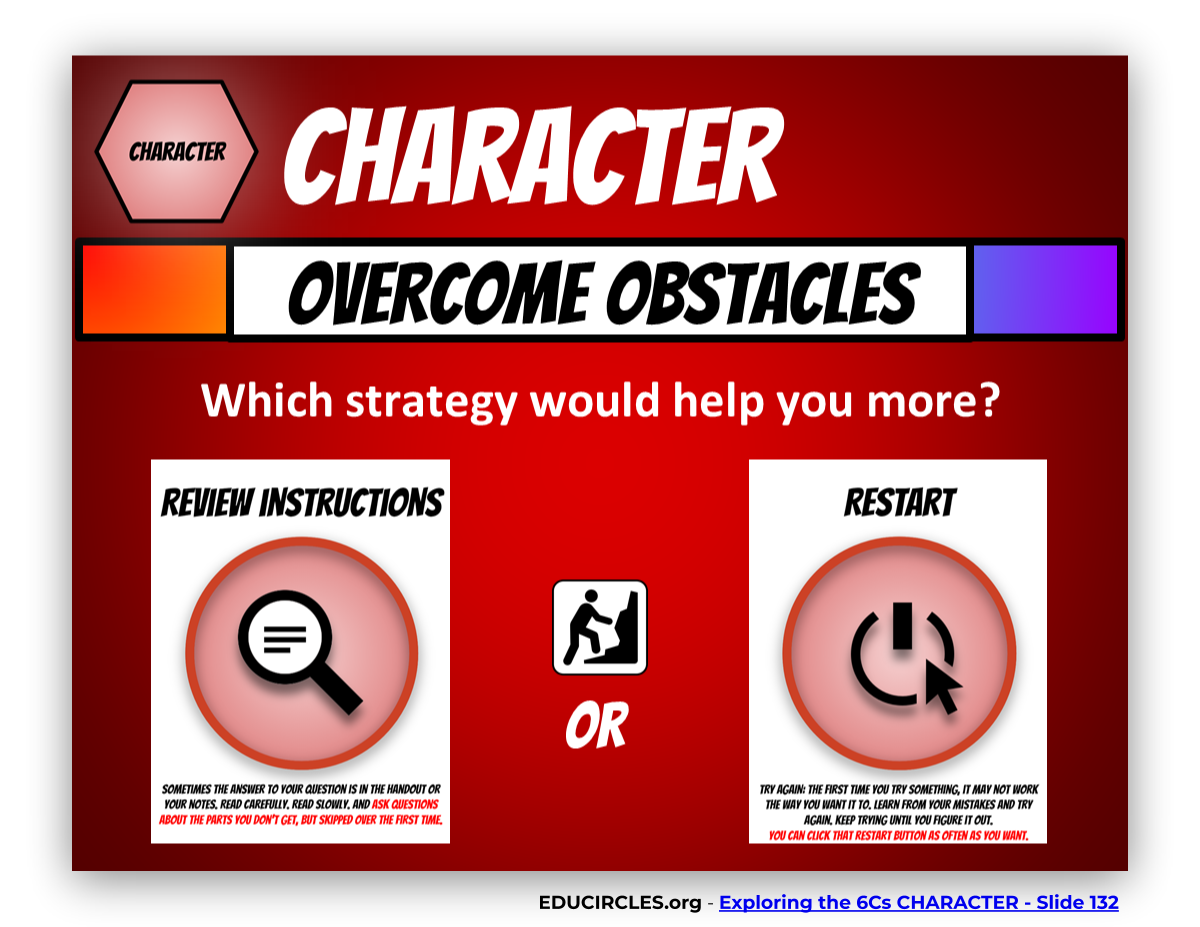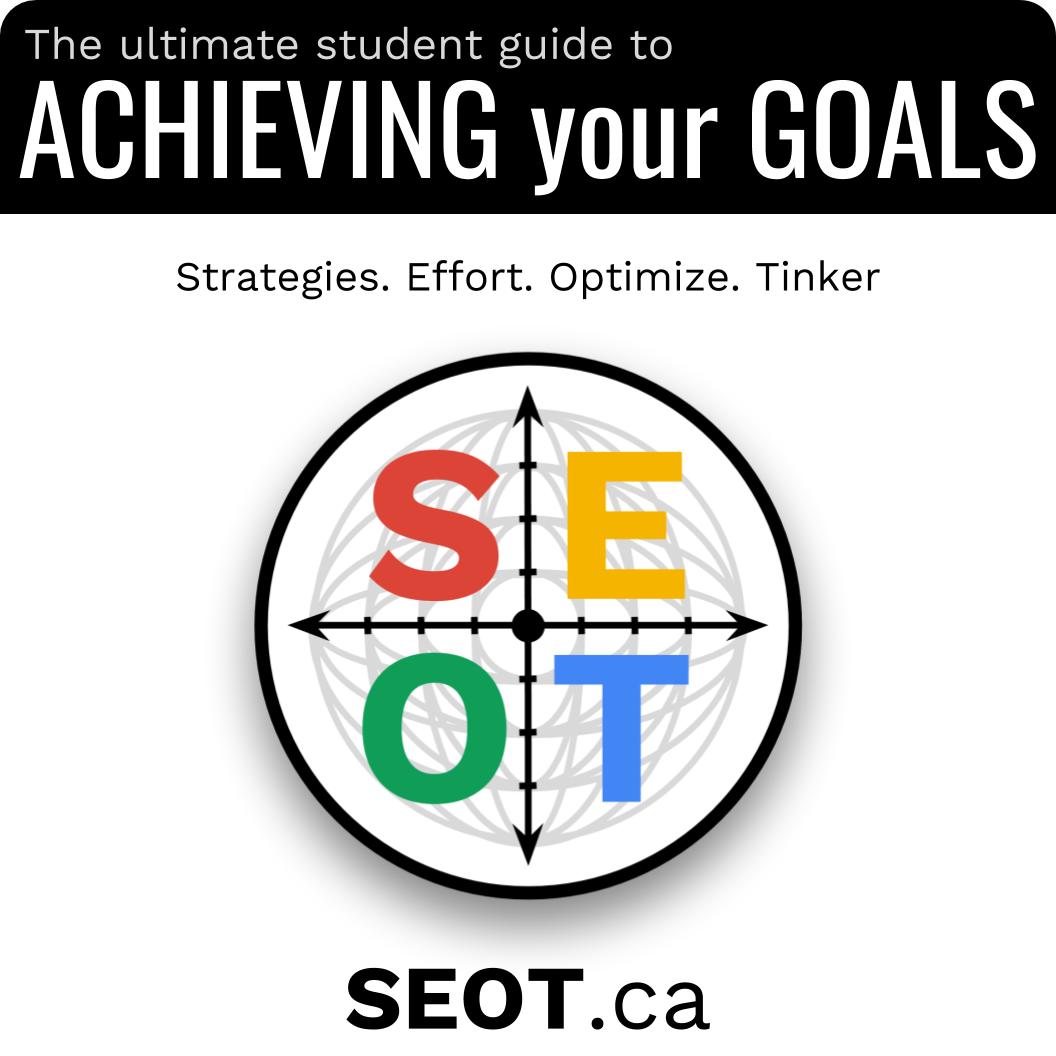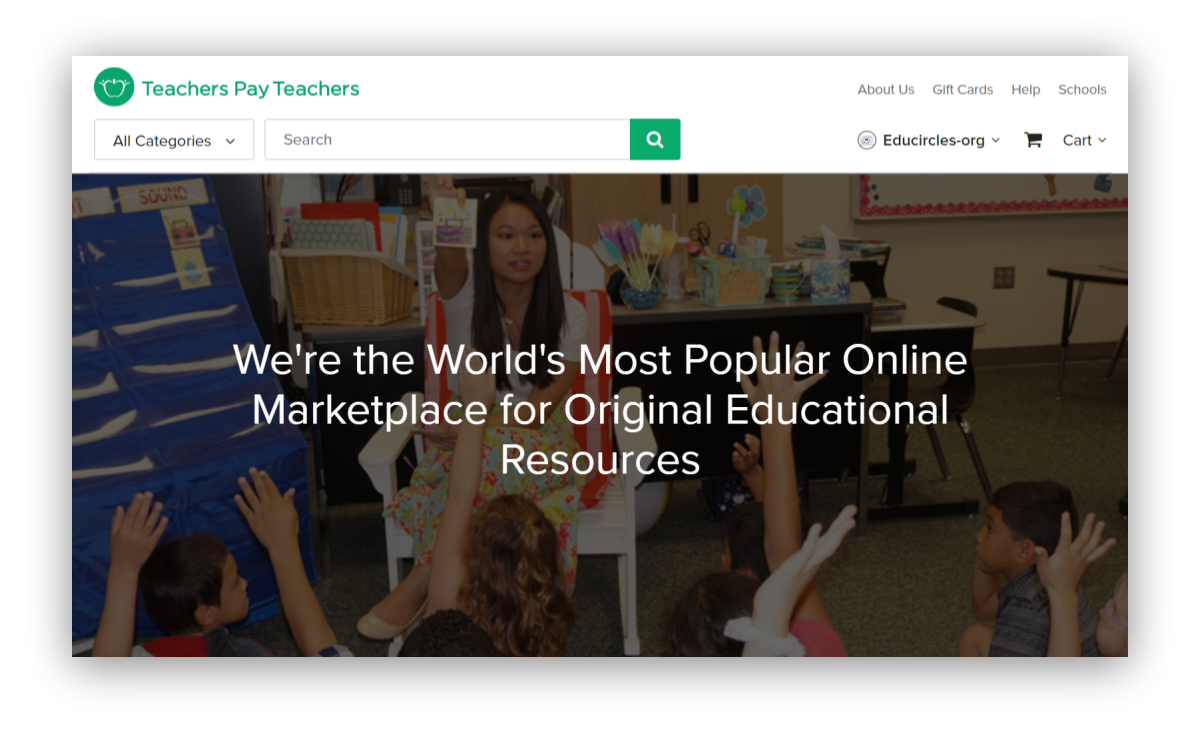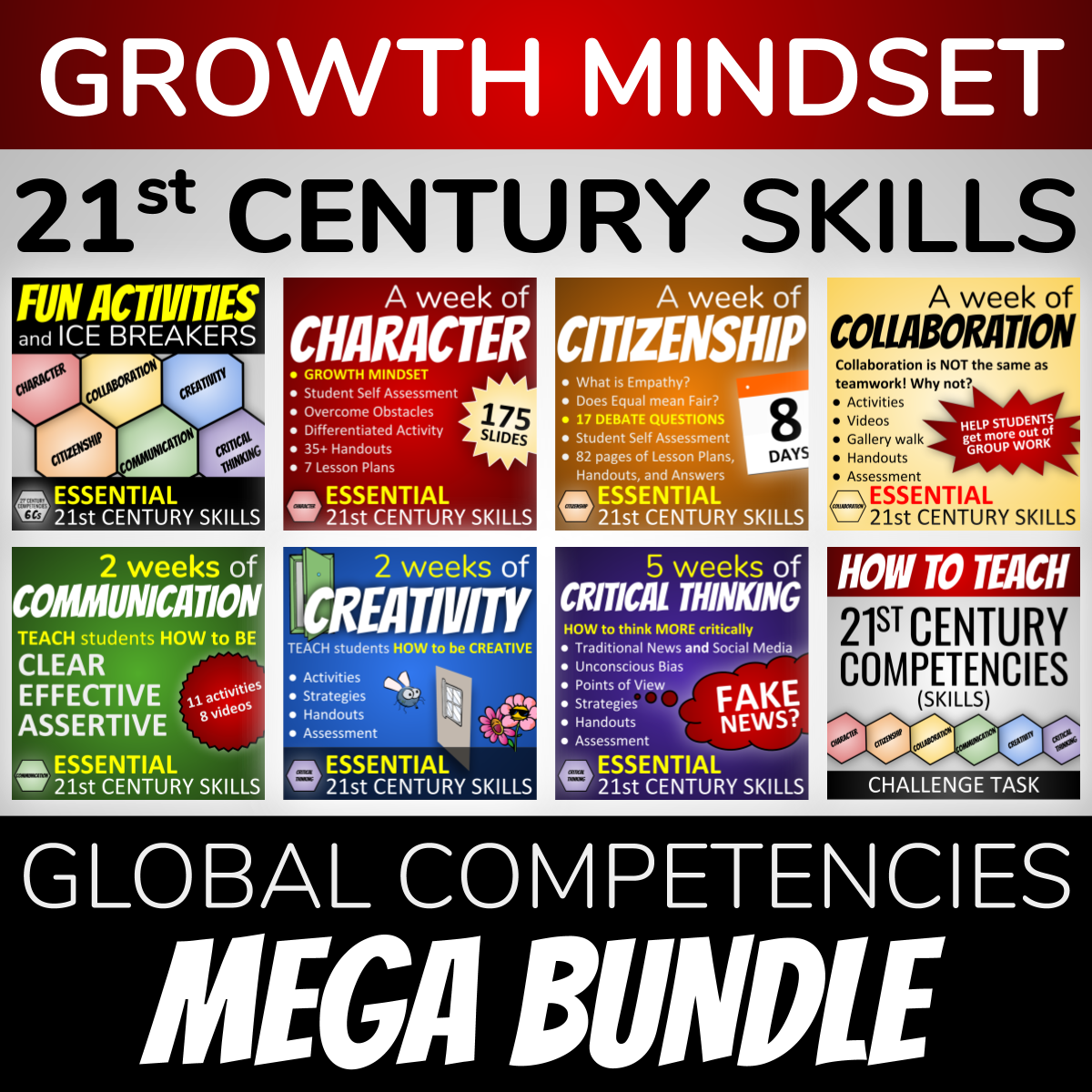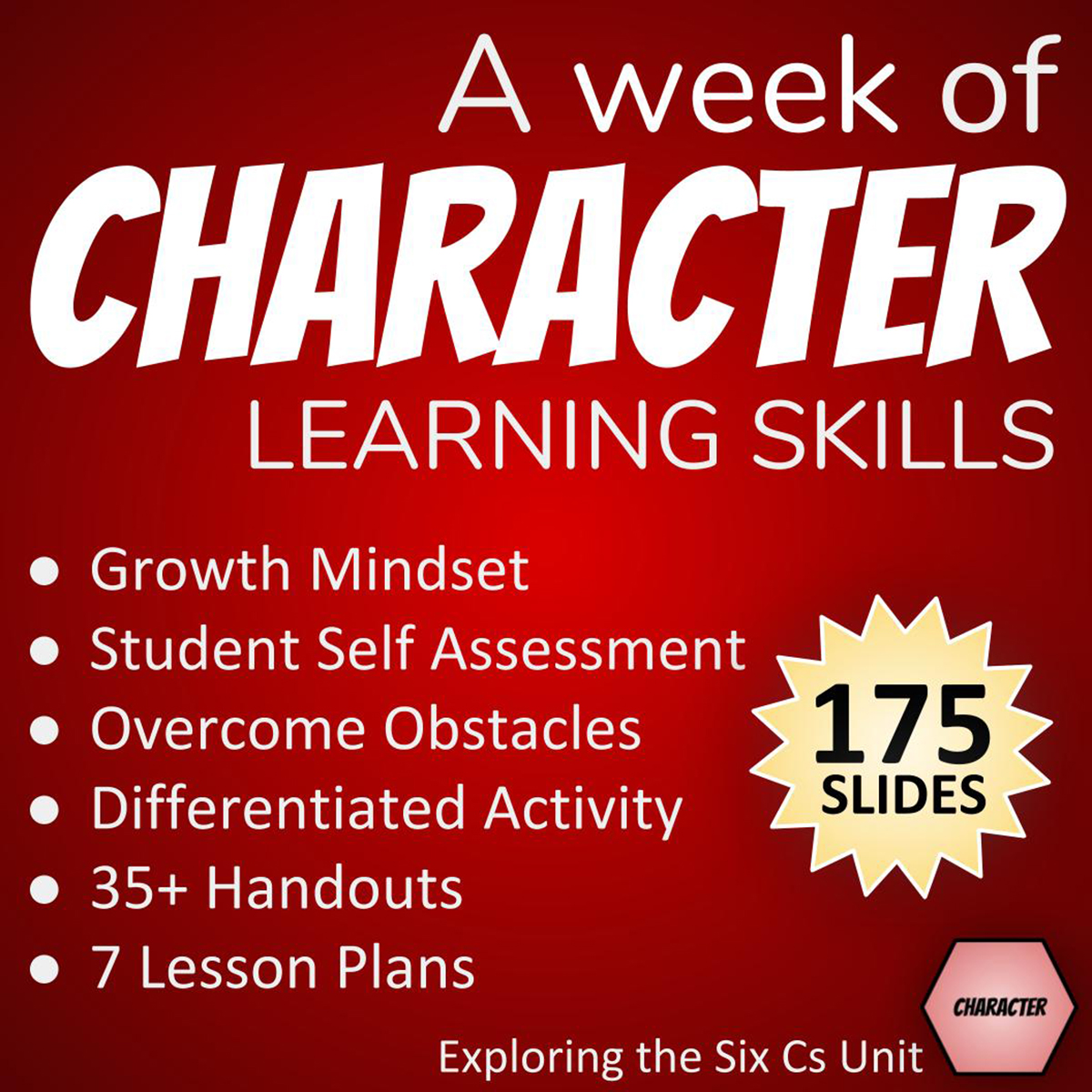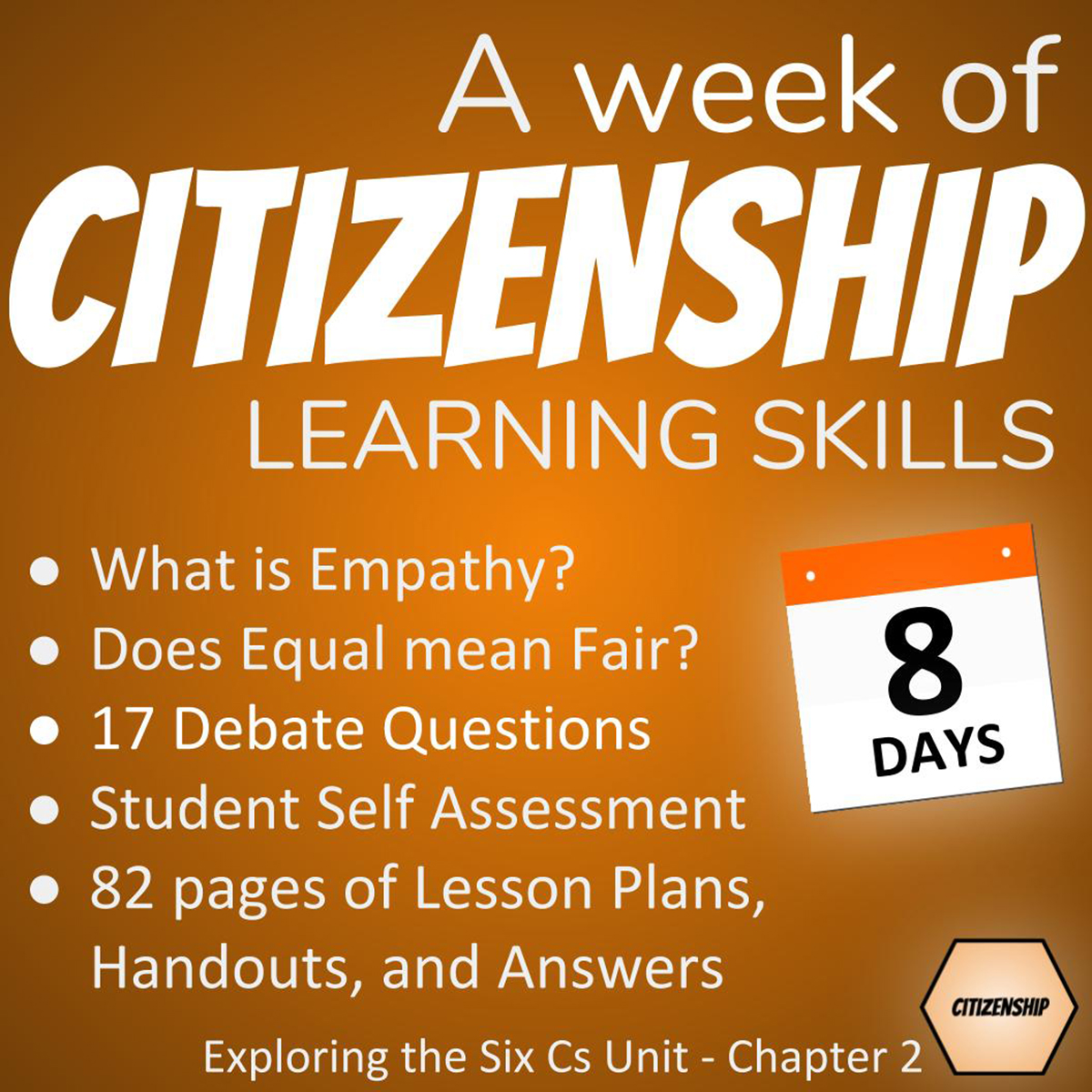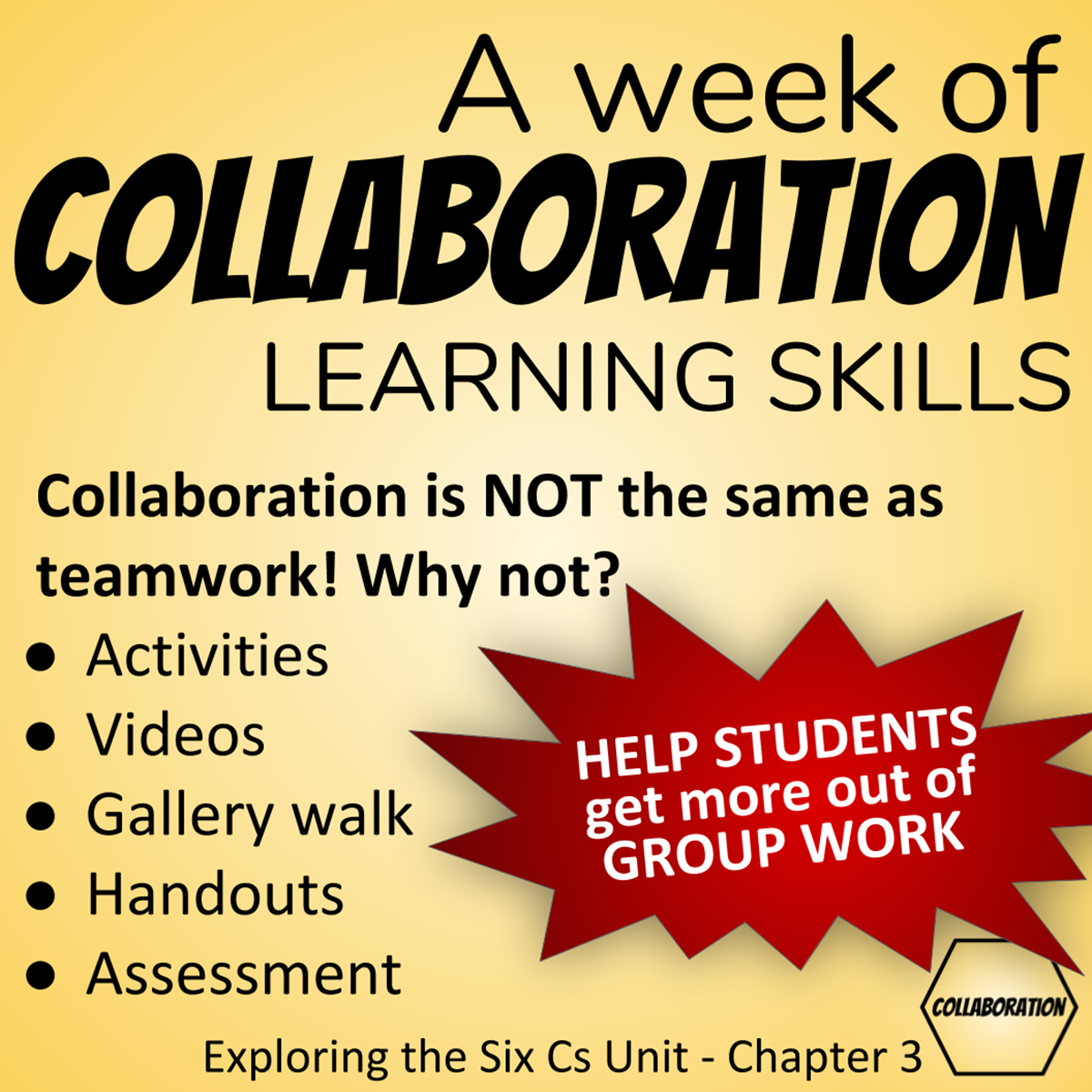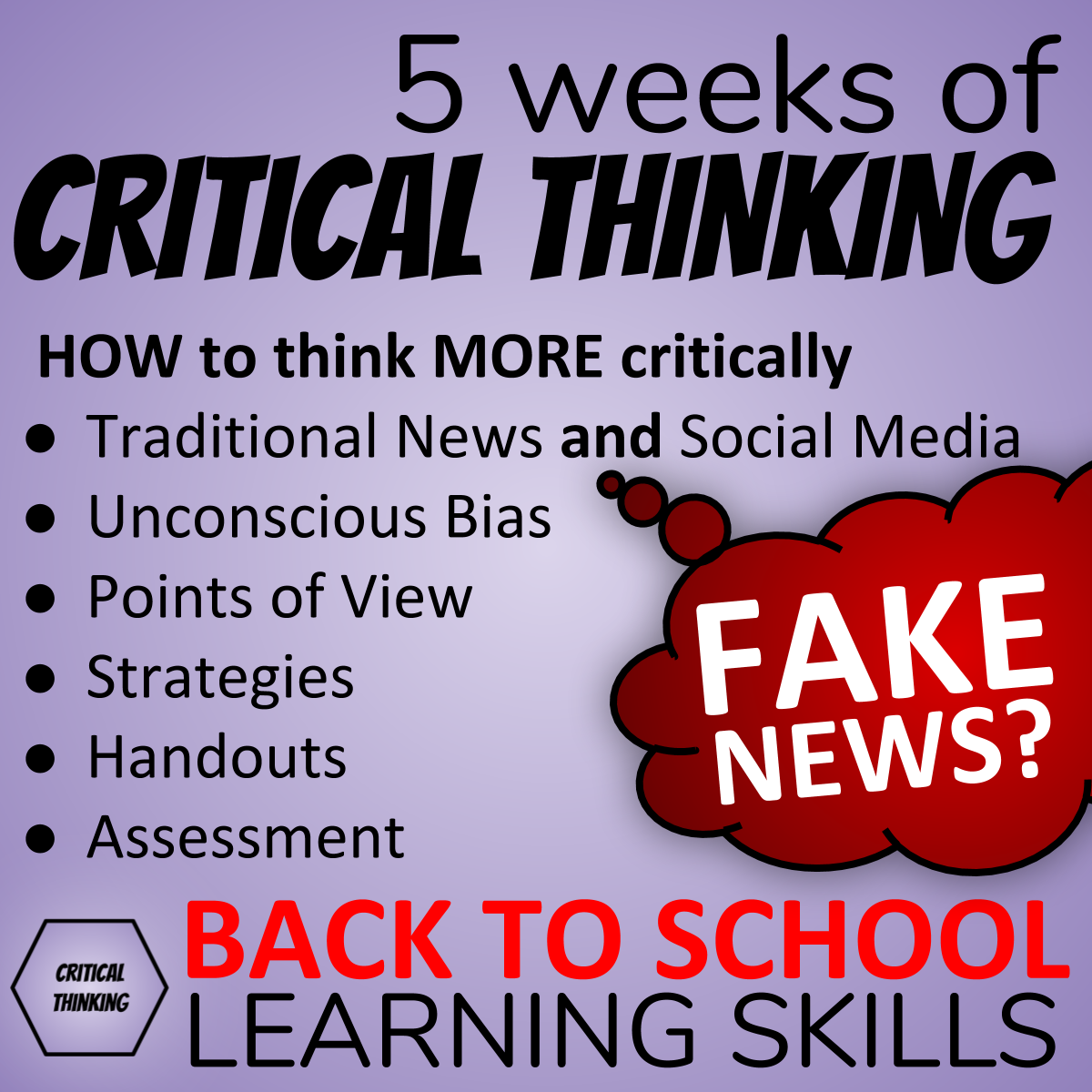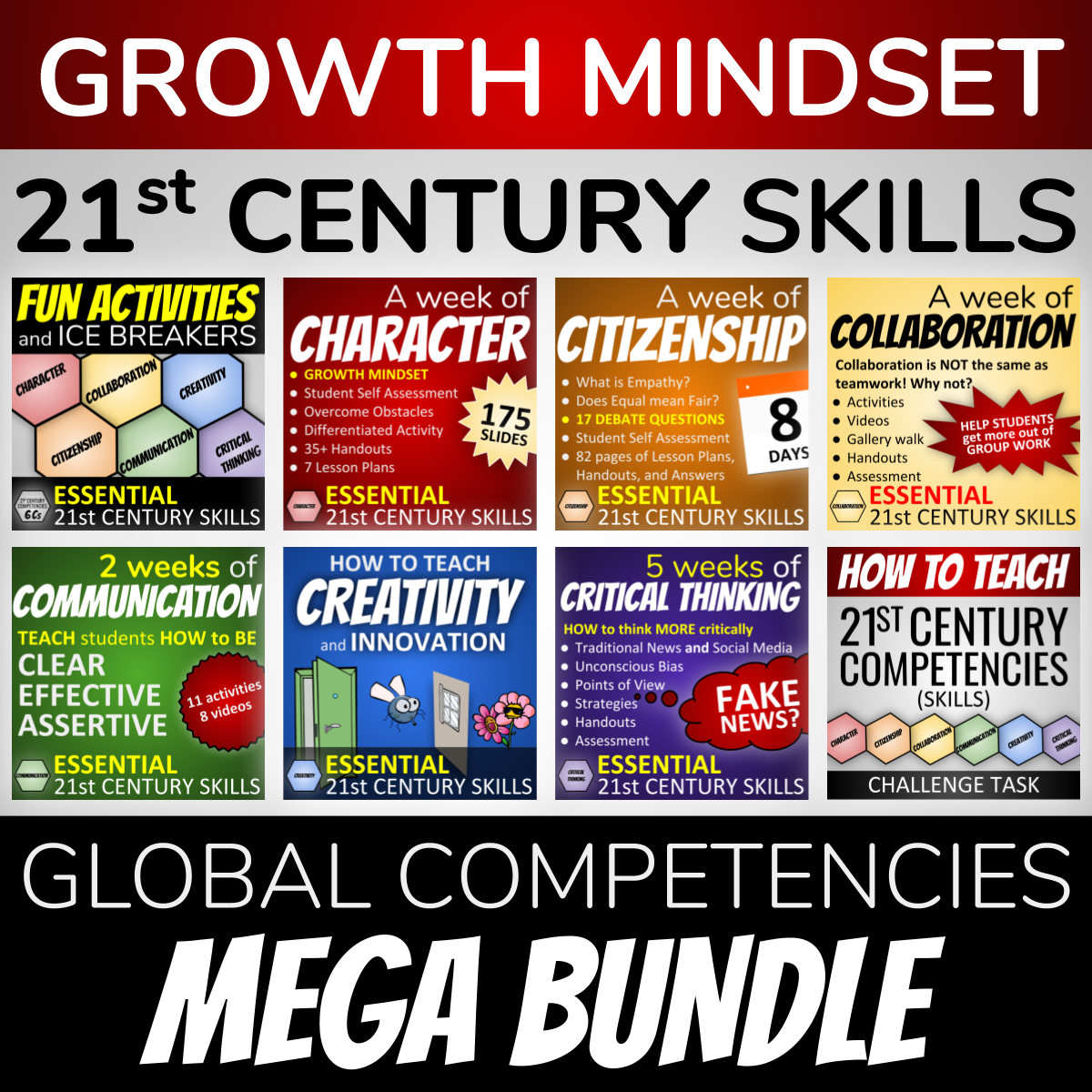Growth Mindset Lesson Plans (PDF) for Middle School and High School in 2022
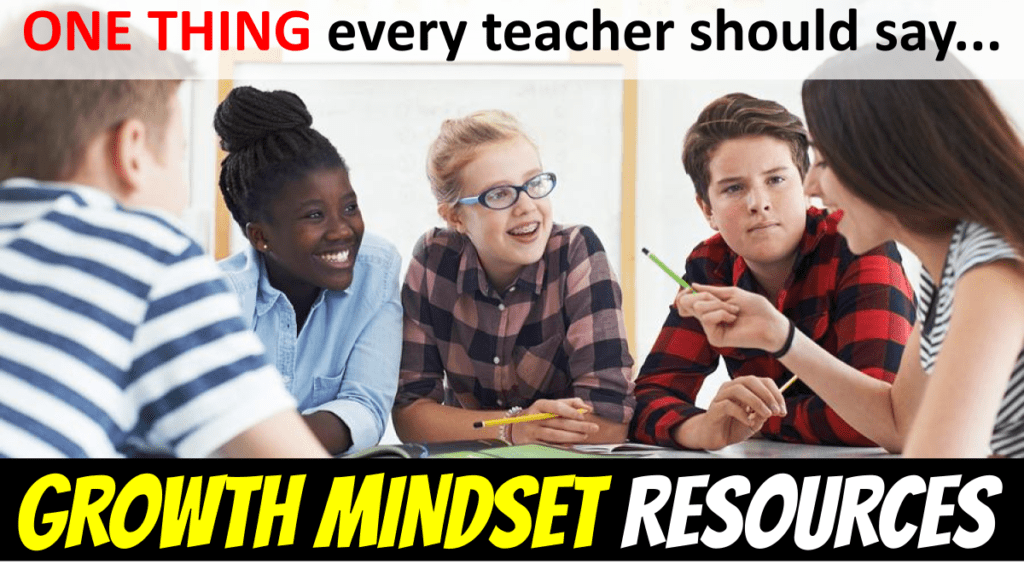
Growth Mindset lesson plans (PDF) to help you teach a strategy-based approach to middle school and high school students.
This post is about incorporating social-emotional learning with a Growth Mindset:
- Lesson plans
- How we’re failing our students in the workforce
- One thing teachers should say at school
- What is a growth mindset?
- How to teach a growth mindset (survey)
- How to save hours of prep
Empowering students with a Growth Mindset is not easy, but worth it.
This transferable skill/attitude can help our students now and in the future:
- in relationships
- at work
- in life (dealing with Covid-19, war, or systemic racism)
- oh, and at school.
Growth Mindset Lesson Plans
Quick Links
Teaching students to develop a Growth Mindset is tough.
That’s why we’re here.
Wouldn’t it be great if there was a quick-fix magic solution to encourage a growth mindset in your students?
Unfortunately, there’s no magic handout or silver lining.
- You can’t just add the word “yet” to every obstacle.
- The sun won’t just shine right away.
- Unicorns won’t sing because you have inspirational quotes hanging on the wall.
Like anything, empowering a growth mindset takes time. It’s about making some epic mistakes along the way.
I’m learning. Just like you. Here’s what I think I know:
We teach in a generation where kids are:
entitled
self interested
unfocused
lazy
Sound harsh?
Simon Sinek was talking about millennials in the workplace but Deep Patel writes about how Gen Z are different, yet similar.
By the way,
- Millenials were born 1981-1996, so 26-41 years old,
- Gen Z were born 1995-2010, so 12-27 years old.
- Gen Alpha were born sometime in the 2010s. So, 12 year olds and under.
We have students who want purpose, who want to make an impact…
and yet, don’t experience success right away,
so they give up and are not happy.
According to Sinek, these kids grew up with “failed parenting strategies.”
Students are told, “You’re special, you can have anything you want in life, and here’s a participation medal for coming in last!”
And yet, students in the real world discover they’re not special, you don’t get anything for coming in last, your mom can’t get you a promotion, and you can’t have it just because you want it.
So, now we have students in the workforce who can be hard-working, idealistic, and feel empowered to “make an impact”, and yet don’t have the patience or tenacity to succeed.
As Sinek puts it, they see the goal of “impact” at the summit of the mountain but don’t realize they have to climb a mountain to get there.
Our students are immersed in technology. They’re used to putting filters on things in Instagram and make things sound awesome… when they’re not.
So when life gets tough, our students respond to these challenges, by turning back to technology for a dopamine hit, instead of developing resilience strategies.
Students in our classroom are growing up in a world with instant gratification. You can have anything you want instantly… except job satisfaction and strength of relationships.
“The overall journey arduous, and long, and difficult, and if you don’t ask for help and learn that skillset, you will fall off the mountain”
Simon Sinek, Organizational Consultant
How do we teach students to communicate? What can teachers do to help kids build the social skills that they’re missing out on? How do we build trust?
- Slow,
- steady
- consistency.
If you don’t have your phone… you just enjoy the world. And that’s where ideas happen. Ideas happen when our minds wander. That’s called innovation.
Do we develop these social skills in the classroom?
If Sinek has to argue that companies and industry have the moral responsibility to make up the learning shortfall, then I have to wonder if classrooms adequately prepare students for life after school in the “real world.”
Sinek is calling on the business industry to help these amazing, idealistic, and fantastic students build confidence, learn patience, learn social skills, and find a better balance between life and technology.
So what does that mean for teachers and the education system if businesses need to teach new employees transferable life skills that they didn’t learn growing up?
Maybe we need a paradigm shift in how we teach students.
- We’re not changing what we teach.
- But, we could change HOW we teach…
What do students learn in a typical classroom?
For many students, school is about playing the game, jumping through hoops, memorizing facts, and giving the answers that the teachers want.
Am I wrong?
- The first place parents and students often look at when we get report cards are the marks (instead of comments or learning skills.)
- When given work in the classroom, students ask, “Is this for marks?” The answer helps students decide how much effort to give to the task.
- Teachers are stressed out about “covering” the curriculum because there’s so much to do (in addition to all of the other things we do in the classroom.)
- And, this was all before the pandemic. Add on top of that, the politics, stress, and gaps in learning, and we have a world where teachers are burning out faster than ever.
SIDE NOTE: Want a high-interest critical thinking lesson to help students become more self-aware and socially aware? Check out the free Who is Invisible challenge.
School often seems results-oriented to students (and parents).
How often have you heard your students say things like this::
- How well did you do on that test?
- What mark did you get on the report card?
- How fast did you run in that race?
Yup, there’s definitely a place for diagnostic quizzes, formative assessments, and summative evaluations. Marks can be great signposts to tell people if they’re headed in the right direction.
But in the 21st century, the kinds of problems that our students will be facing when they grow up haven’t even been invented yet.
And do we really want to (continue to) raise a generation of people who are waiting for an adult to tell them what to do and how to do it?
My self-worth and identity are based on a number that someone else gives me. Hmm…
Very quickly, our students start to think of themselves as…
- Good at math or not good at math.
- A great athlete, or not a great athlete.
- A creative artist or just not that good at art.
- Smart or dumb
- A success or a failure
And that’s just the way it is. Or is it?
When we give feedback to our students, why not try to focus on process?
As teachers, we can put the emphasis on process in the way we give feedback during back to school activities and our day-to-day lessons.
It’s one simple change. But, it’s a big paradigm shift.
Encouraging students for the process (as opposed to the end result) can be a game changer.
At the start of the school year, when we’re getting to know our students, we often give praise as we create a welcoming atmosphere.
- Wow, you’re a natural athlete!
- Oh my gosh, you’re so creative!
- You’re brilliant!
Psst. There’s one thing that teachers should say at school
Do you know what it is?
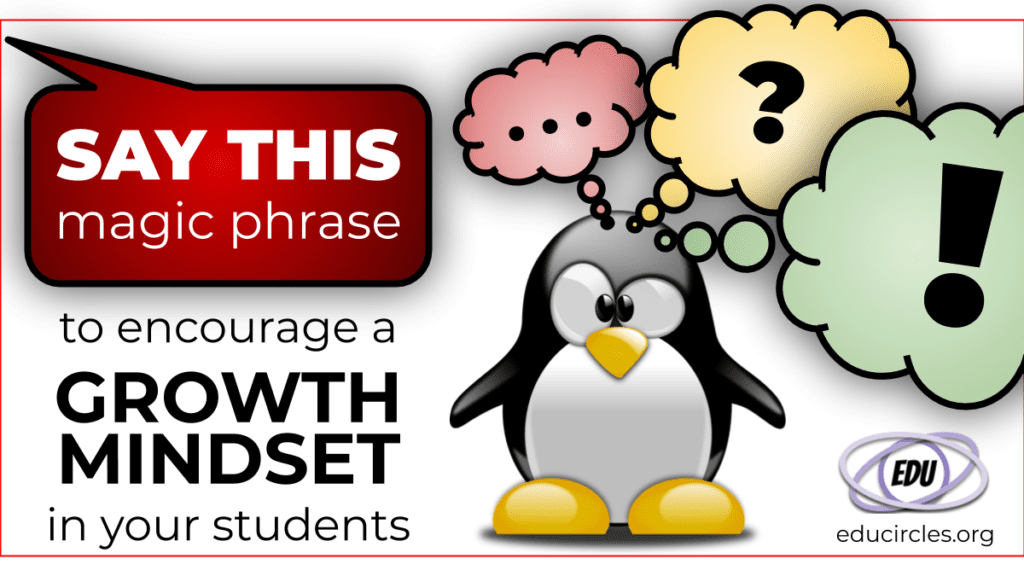
Want to know the one phrase teachers should tell students this year
Here it is:
Good job! You worked very hard!
Instead of:
Good job! You’re really smart!
Note the emphasis on process? You worked hard and that’s why you did a good job.
Wait. That’s it? The magic phrase that teachers should say to students is, “You worked very hard!”
Yep.
Okay, the title, “One thing teachers should say at school” is pretty clickbait-y. But, you knew that coming in.
Of course, there is no one magic solution to make students want to struggle through learning obstacles.
It’s not that easy. But, nothing in life worth having is easy. You knew that, too!
Wouldn’t it be great if we could give our students an introduction to growth mindset and then boom! Our fantastic growth mindset unit plan turned our disengaged students into intrinsically motivated students!
Sadly, a single growth mindset introduction lesson is just the tip of the iceberg.
It’s about the process.
We’re still encouraging students – just not about the end result. Saying you’re smart, you’re strong, you’re fast can help reinforce a fixed mindset.
Helping to build character in our students is a process.
As teachers, we got into this gig because we’re passionate about the work.
- Saying, “Great job, you worked hard!” is just the tip of the iceberg to shaping resilient students who are able to pick themselves up after they fail.
- “Great job, you worked hard!” reinforces the idea that effort is required to lead to success. (And not that you did a great job because you are inherently brilliant.)
- So, building character and resilience is an ongoing process. And, it starts with you saying, “Great job, you worked hard!”
By the way, this simple change in how we provide feedback is something we can do in any class.
It doesn’t have to be limited to the Growth Mindset Lesson Plans that we use during Back to School student activities.
QUESTION: Do I say, “Great job! You worked hard!” even if they haven’t worked hard?
No, of course not.
We don’t want to reward a lack of effort.
We want to recognize true effort when we see it to encourage more of that behavior.
This is about encouraging students to focus on the process and not just the end result.
After all, you do want to see your students genuinely try, don’t you?
A tougher question might be what happens if the student succeeds without needing to apply any effort at all?
Are they learning?
Or, better yet, what are they learning?
And what happens when eventually, later on, they finally hit a grade or a point where it doesn’t come easily any more?
Have they developed a mindset and cultivated an outlook on life that will help them keep going? Or, do they hit a wall?

So… what is a Growth Mindset and why do I want my students to have one?
Teacher Tip: This idea of a growth mindset comes from Dr. Carol Dweck’s book which is a fantastic read. She also has a TED talk which can be found here.
NOTE: I am not associated, affiliated, or connected with her book. I simply read her book and tried to teach the concepts to my students. Where possible, I tried to use direct quotes or I paraphrased her words to explain her research to students.
Here are some important concepts to include in your growth mindset introduction.
These slides can be edited to slide into any growth mindset lesson plans that you already have!
What is a Growth Mindset?
The idea of a growth mindset is that “success is based on hard work, learning, training and not giving up.”
On the other hand, a student with a fixed mindset would believe that “success is based on what you were born with.” In other words, your innate ability.
Research shows that you can change your mindset just by changing the way you talk to people
…praising the process that kids engage in, their effort, their strategies, their focus, their perseverance, their improvement. This process praise creates kids who are hardy and resilient.
Dr Carol Dweck, TEDx
How do I put students into a Growth Mindset?
If we tell ourselves (or students),
“Good job. You’re very smart!”
it reinforces the idea that smartness is something that we are, or are not.
But if we tell ourselves (and our students),
“Good job. You worked very hard!”,
it reinforces the idea that working hard produces results and if we apply strategies and efforts, we can achieve success.
Here are 3 important ideas to tell students in an introduction to Growth Mindset:
- The ideas about growth mindset and fixed mindset are based on research.
- The power of our mindset is MORE IMPORTANT than ability.
- We can shift our mindset (and the mindset of others) with a few words.
An example of HOW to use this magic phrase
Let’s use an example of how to give feedback on process (instead of ability) that we can do right from day one.
The first week of school activities tend to be fun, welcome back activities about getting to know each other!
Let’s say you’re doing a get to know you icebreaker like Name BINGO / Human BINGO.
Name BINGO or Human BINGO is a Back To School activity where students are given a BINGO card with different questions in each box. The goal is to go around the class, ask classmates questions, and collect signatures.
There are some questions like find someone who:
- competes at a regional, provincial, or national level.
- loves to read.
- knows pi.
PSST! Read this post about how to turn this back-to-school activity into a more powerful communication mini-lesson.
Instead of complimenting your students based on intelligence or talent, try praising them on the process and effort:
Wow, you must train really hard to be able to compete at that level!
INSTEAD OF “Wow, you must be a natural athlete!”
Wow, you must really love to learn!
INSTEAD OF “Wow, you must be really smart!”
Take the Survey!
How do I teach a Growth Mindset to students?
Great question! There’s no one way – different things will work for different students.
For some of us, the idea of a growth mindset represents a huge paradigm shift in the way we teach.
(By the way, this Growth Mindset for Students survey (PDF) is included in the growth mindset unit plan here.)
Here’s one way to do a growth mindset introduction with your students during Back to School activities, before a class project, or any time students seem stuck in a fixed mindset.
Start with a class survey
(before even talking about mindsets…)
How much do you agree with the following statement:
Your intelligence is something very basic about you that you can’t change very much.
Teacher Tip:
Sometimes, you might have to give examples of different scenarios so students can figure out which answer to circle.
- Some people believe that “how smart you are is a core fact about you and it definitely can’t change.” Those people would circle “strongly agree”
- If you kind’ve think that, “Yeah, I guess how smart you are is part of you and it doesn’t really change,” then circle “agree”
- Some people might believe that “No, you can change your intelligence and how smart you are, but only a little bit.” Those students would circle “disagree.”
- Finally, if you think, “This is absolutely wrong. How smart you are isn’t a part of you. It can change a lot,” then circle “strongly agree”
TEACHER TIP: As you go through the questions, there’s a screenshot of the handout to help visual learners.
You can also draw attention to the yellow highlight on the slideshow to show students which question we are on.
Things get more interesting when you start asking students questions about other aspects…
Is creativity or artistic talent something very basic about you that you can’t change very much?
What about sports ability?
Or personality and character?
Taking up the Growth Mindset student survey is a great way to start talking about the difference between Growth Mindsets and Fixed Mindsets
The start of the school year is a fantastic time to have this conversation.
We all can find ourselves slipping into a fixed mindset about different obstacles, and when that happens, we can make a choice to choose to shift into a growth mindset.
Okay, so what do I do after I introduce Growth Mindsets and Fixed Mindsets to my students?
This is the key part.
Introduce the idea that strategies are things students can use to try to improve results. Success doesn’t happen randomly.
Whether we’re talking about reading a textbook, throwing a football, solving a math problem, or playing Fortnite, if we do certain things, we can get better results.
Sudoku is a fantastic GROWTH MINDSET activity to explain the concepts of strategies and to build perseverance!
Why?
☑ Sudoku comes in a series of progressively difficulty puzzles
☑ Easy to differentiate for different student abilities
☑ Sudoku can be frustrating. This is an opportunity to build character and resilience!
HOW often do you hear your students say the following when they face a learning obstacle:
☑ I don’t want to.
☑ I’m confused. I’m stuck.
I’m not sure what to do.
☑ I tried, but it didn’t work.
I give up.
SHOW your students STRATEGIES to try when they get stuck…
This doesn’t mean giving students hints on reading this paragraph or scaffolding the lesson.
Literally give students universal strategies that might help in any obstacle – whether they’re stuck on a sudoku puzzle, or a writing assignment!
Working harder isn’t always the answer. But, what does work smarter actually mean?
This is huge.
Students often think that working harder is the answer. And, it is, sometimes, but not always.
Lots of students think writing more will get them a better mark. But more is not always a four.
(In Ontario, we use levels. Level 4 is an “A”. Level 2 is a “C”. So, giving lots of level 2 work does not mean the work becomes a Level 4 in terms of complex thinking.)
Working hard is important…
But, students also need to know the difference between working hard, and working smart.
☑ Did you try different STRATEGIES?
☑ Did you put in a real EFFORT?
(Did you actually try)
☑ Did you keep track of how things are going and OPTIMIZE what you did by focusing on what seems to work?
☑ Did you TINKER and try little experiments that probably wouldn’t work, but you could learn from the successes and failures?
Check out the free goal-setting slideshow lesson on our other site: SEOT.ca
I don’t have time to make these Growth Mindset Lesson Plans.
Nope, you really don’t.
As a teacher, you’re busy doing a million other things in your classroom
☑ Collaborating with colleagues.
☑ Going to staff meetings
☑ Going to impromptu meetings about issues that pop up.
☑ Figuring out how to differentiate for the wide spectrum of abilities in your class.
☑ Photocopying a million things
☑ Organizing field trips.
☑ Contacting parents / guardians
☑ Figuring out extra-curricular activities.
☑ Marking, assessment and evaluation
☑ Trying to stay sane and maintain some sort of healthy work-life balance.
SAVE HOURS of PREP WORK! Use these Growth Mindset Lesson plans as a starting point
Want to empower your students with a growth mindset by using a strategy based approach?
We spent over 500 hours in prep work, research, and making these growth mindset lesson plans and resources look pretty so that you wouldn’t have to.
Our goal at Educircles.org is to SAVE TEACHERS TIME
and help teachers to empower their students to be independent learners.
We SAVE YOU TIME by providing:
☑ comprehensive growth mindset lesson plans,
☑ slideshows,
☑ handouts and resources
that excite students with learning opportunities to develop strategies for success.
QUESTION:
What do other teachers say about our growth mindset lesson plans?
We sell our lessons on the Teachers Pay Teachers marketplace. Here are some of the reviews:
QUESTION:
What if I want to change or delete slides in these Growth Mindset Resources?
No problem.
This is really important because you know your students best. So, we made it easy for you to switch things up to fit your reality!
Edit these Growth Mindset resources to fit your specific classroom needs and teaching style!
You also get PDF versions so you can just print and just get started.
QUESTION: Is it safe to buy resources online?
We sell our Growth Mindset lesson plans and resources on Teachers Pay Teachers. TpT is the world’s most popular online marketplace for original educational resources…
We sell our Educircles.org resources on Teachers Pay Teachers
5 million Teachers used TpT in the last year
More than 2 out of 3 teachers in the U.S. have used a resource on TpT

I want to save TIME and MONEY, please.
Yup. You already spend a lot of money on buying resources for your classroom.
Plus, you already spend so much of your life dedicated to your students and your classes. There’s a reason why the burn-out rate for teachers is so high.
We love what we do.
We do important work.
Teaching is who we are.
You need to find ways to save TIME and MONEY because your work-life balance and mental health is important.
We save you TIME and MONEY by putting our best 21st Century Learning Strategies packages into a MEGA BUNDLE.
What’s in the Growth Mindset Lesson Plans MEGA BUNDLE?
We put everything you need to introduce a growth mindset to your students by explicitly teaching them about 21st Century Skills / Competencies.
- This growth mindset unit plan has over 90 lessons focused around 21st-century learning skills.
- We constantly add more bonus goodies to the bundle!
Growth Mindset Lesson Plans (PDF)
Exploring the 6Cs is an engaging way to explore a Growth Mindset and Social-Emotional Learning (SEL) with your students.
- Character – 8 lesson plans (PDF)
- Citizenship – 8 lesson plans (PDF)
- Collaboration – 8 lesson plans (PDF)
- Communication – 12 lesson plans (PDF)
- Creativity and Innovation – 14 lesson plans (PDF)
- Critical Thinking – 24 lesson plans (PDF)
- Group Challenge Task – 16 lesson plans (PDF)
Empowering a Growth Mindset in our students is more than simply doing a Growth Mindset survey with students and then or teaching them the difference between a Fixed Mindset and a Growth Mindset.
Let’s start there, and then give students an opportunity to stay in a growth mindset or shift themselves back into one.
FYI: The Character Unit does include a Growth Mindset Survey for students (PDF 5. What do you believe survey and answers.)
Teaching a Growth Mindset is also about opening the door to self-awareness and self-management.
How do we keep trying when we encounter obstacles? What does a strategy-based approach sound like?
If I keep trying, eventually I will succeed. But what does working hard look like when we’re talking about…
- perseverance (character),
- standing up for others (citizenship),
- working in groups (collaboration),
- being assertive when you’re upset (communication),
- coming up with your own ideas (creativity), or
- making informed decisions? (critical thinking).
Each of the 6 Cs chapters comes with:
- Detailed lesson plans
- Comprehensive slideshow to teach the unit
- Activities and handouts
- Lesson review questions
- YouTube Videos to analyze
- Consolidation graphic organizer
- Chapter review question
The growth mindset lesson plans for each of the 6 Cs come in printable PDF format and include:
- Script
- Teacher prompts
- Possible student answers
- Screenshot of the slides that go with the lesson
As teachers, we do more than just teach the curriculum.
As teachers, we do more than just teach a curriculum.
It takes a village to raise a child.
We help raise good people empowered with strategies and skills to keep going when life gets hard.
Includes Growth Mindset Survey for students (PDF)
Equal and fair are not the same thing.
We build classroom community and show students HOW to be good citizen – in the classroom, at school, in our local communities and beyond.
School isn’t just about marks.
Our students need to work as part of a team. Now and when they’re older.
Collaboration is NOT the same as teamwork!
Everyone can communicate.
Not everyone can communicate effectively.
Communicating clearly, effectively, and assertively is a learnable skill.
Having a growth mindset helps our students realize they can communicate more effectively in tough conversations.
FAKE NEWS is a reality
Being aware of our unconscious bias and the need to look for opposing points of view helps us to make informed decisions.
Teachers matter. And so does your work-life balance.
WE DID THE HEAVY LIFTING putting over 500 hours of prep work to make high interest, high quality growth mindset lesson plans and resources for you.
ALL YOU HAVE TO DO is spend a little bit of time tweaking the slideshow, handouts, and lessons to fit your teaching style and classroom realities.
(But, only if you want to!)
You can edit and modify the files. Or, just print off the growth mindset handouts and get started right away!
